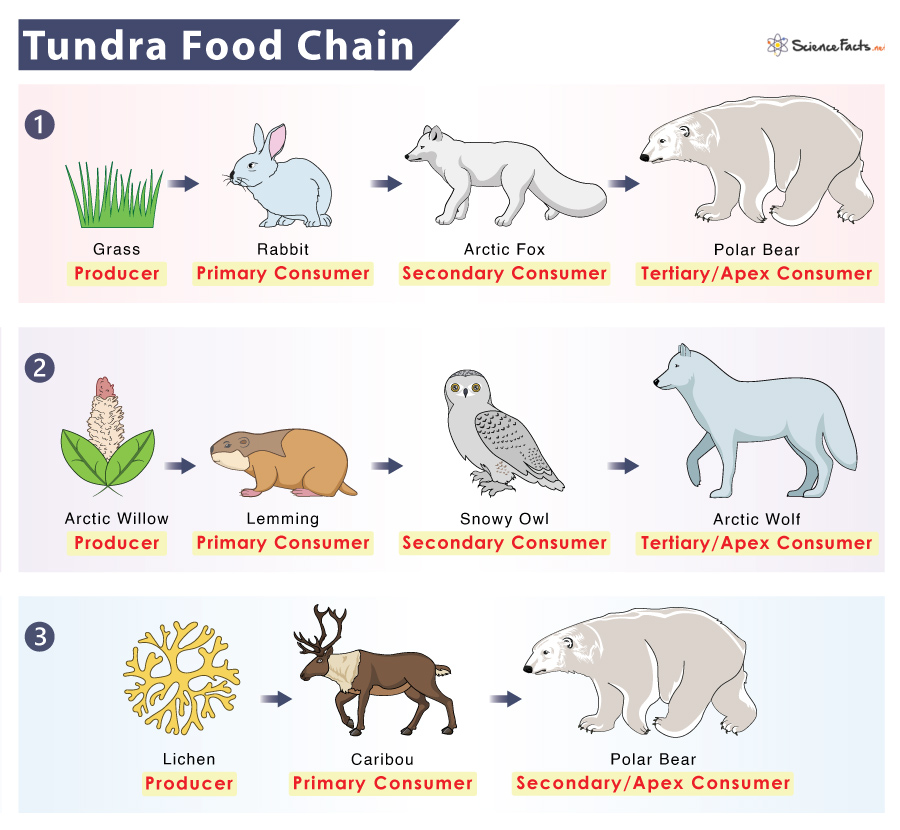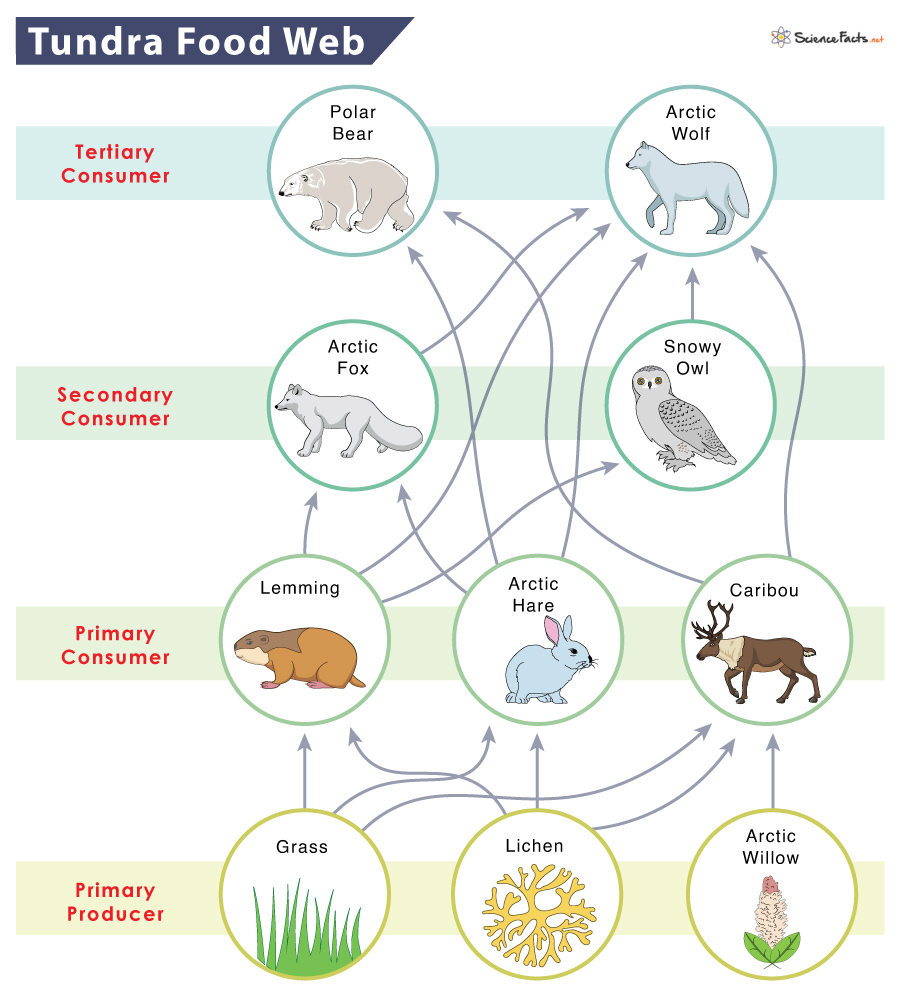The tundra biome is the coldest among all biomes on Earth. They are distributed in North America, Europe, Asia, and coastal Antarctica. The tundra is a frozen desert; thus, the diversity of living organisms is relatively low. However, the plants and animals that thrive in such conditions display specific adaptations of their bodies, diets, and survival methods. There are three types of tundra biome found throughout the world: As the predator-prey relationship is complex, the tundra food chain looks more like a food web than a food chain. However, due to its low biodiversity, the food chains in this biome usually have 3-4 links.
Tundra Food Chain Examples
Decomposers
Producers
These are a group of plants producing food by converting sunlight into chemical energy. Without deep-rooted plants, grasses, lichens, wildflowers, and caribou moss perform the role of producers in the tundra ecosystem. Lichens are the most abundant producers. It is an association of algae and fungi engaged in a symbiotic relationship. Producers form the base of the food chain.
Primary Consumers (Herbivores)
In tundra, the primary consumers are herbivores. They eat plants such as lemmings, musk ox, reindeer, squirrels, voles, and arctic hares. Mosquitoes, flies, moths, grasshoppers, arctic bumble bees, other insects, and birds such as ravens, falcons, and gulls are also found in this trophic level. Primary consumers reside in the second food chain level next to the producers. These organisms have thick furs or coats to reduce the loss of body heat and keep the body warm. Other herbivores, like caribou, use hooves to support themselves in the thick, cold snow.
Secondary Consumers (Omnivores)
This group is dominated by omnivores such as arctic foxes, brown bears, and grizzlies. They feed on the herbivores and the producers for their food. For example, Arctic foxes and brown bears feed on small mammals and berries.
Tertiary and Apex Consumers (Carnivores)
These carnivorous animals feed on primary and secondary consumers, like Arctic wolves, snow leopards, wolverines, polar bears, and snowy owls. Depending on the type of food chain, organisms in this group assume the role of a tertiary consumer or an apex consumer. For example, the Arctic wolf is the apex predator in the tundra biome feeding on snowy owls, a secondary consumer for this food chain. Similarly, the snow leopard is the apex predator in the Alpine tundra, feeding on alpine blue sheep. The Arctic wolf, being an apex predator, has no natural predators. They die a natural death or are killed by humans for fur. In such cases, humans are the ultimate predator. Like other ecosystems, recycling nutrients is essential for maintaining balance in the tundra ecosystem.

